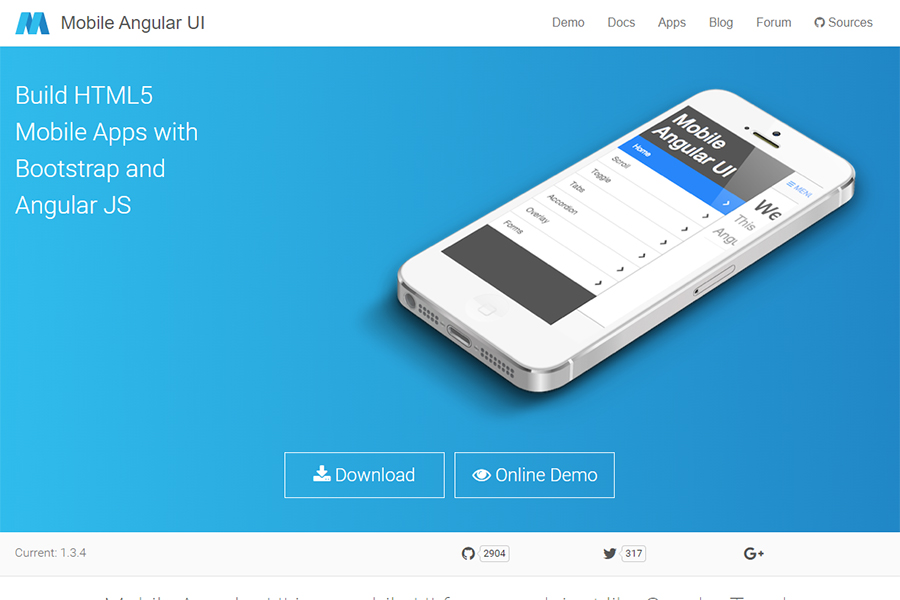Mobile Angular UI Pros and Cons
Mobile Angular UI is an extension of the Twitter Bootstrap development framework that provides a wealth of mobile components for building hybrid mobile as well as desktop apps. It’s an open-source front-end platform that looks familiar to anyone who has used Bootstrap or Angular JS before.
In this post, we’ll take a closer look at the most important advantages and disadvantages of Mobile Angular UI so you can decide whether this framework is a good choice for your project.
Mobile Angular UI Pros and Cons – Pros
Now let’s zoom in on the pros of using this platform.
- Uses Robust Libraries – Mobile Angular UI makes use of overthrow.js and fastclick.js which enables developers to create fast apps that provide a good user experience.
- Simple Web App to Desktop Conversion – Since it uses Bootstrap code syntax, Mobile Angular UI makes it fairly easy for developers to take an existing desktop web app and port it to mobile. This can reduce development expenses substantially.
- Powerful Mobile Components – Developers can find in Mobile Angular UI all the mobile development components that Bootstrap is missing, like sidebars, navbar, switchers, or overlays, to name only a few. This varied palette of components can streamline front-end (client-side) development.
- Works for Any Kind of App – Mobile Angular UI is flexible and sophisticated enough to enable developers to create just about any kind of hybrid app, from simple, minimalist apps with just a handful of features to advanced ones.
- Integrates with Other Frameworks – When building apps with this platform, developers can also use components from other frameworks such as Ionic to simplify their tasks and build into the app UI the functionality that they need.
- Attractive User Interface – One of the main reasons to use this framework is the beautiful and smooth interfaces it can create. Even when the interface doesn’t look entirely like a native interface, it’s still user friendly.
Mobile Angular UI Pros and Cons – The Cons
In most cases, this means app interfaces that are not 100% native in design as well as limitations in integrating native platform hardware features. Here are some other cons you need to know.
- Potential Security Vulnerabilities – Mobile Angular UI is a JavaScript framework, and JavaScript can open doorways to hackers and cyber-attacks. Apps built with Mobile Angular UI need strong authentication on the server-side.
- Difficult Debugging – Because of its use of HTML markup, Mobile Angular UI can make the process of finding and fixing errors not the most straightforward around.
- Lots of Dependencies – Compared to other frameworks, this one has quite a lot of dependencies which may annoy developers who want to keep their app code as supple as possible.
- Broad Documentation – The documentation that comes with this framework isn’t the most detailed, so that new developers who are just getting started with it may have to do some extra research and ask questions online to find their way around problems.
Mobile Angular UI Pros and Cons – Final Thoughts
For developers familiar with Bootstrap, Mobile Angular UI may seem like a natural choice that gives them plenty of mobile components to play around with. Its limitations are not deal-breakers, and developers familiar with JavaScript, HTML5, and CSS will feel at home using it. At the end of the day, Mobile Angular UI is a capable framework for cross-platform hybrid app development.
Mobile Angular UI Pros and Cons – Additional Resources
- Mobile Angular UI Website – Mobile Angular UI provides essential mobile components that are missing in Bootstrap 3
